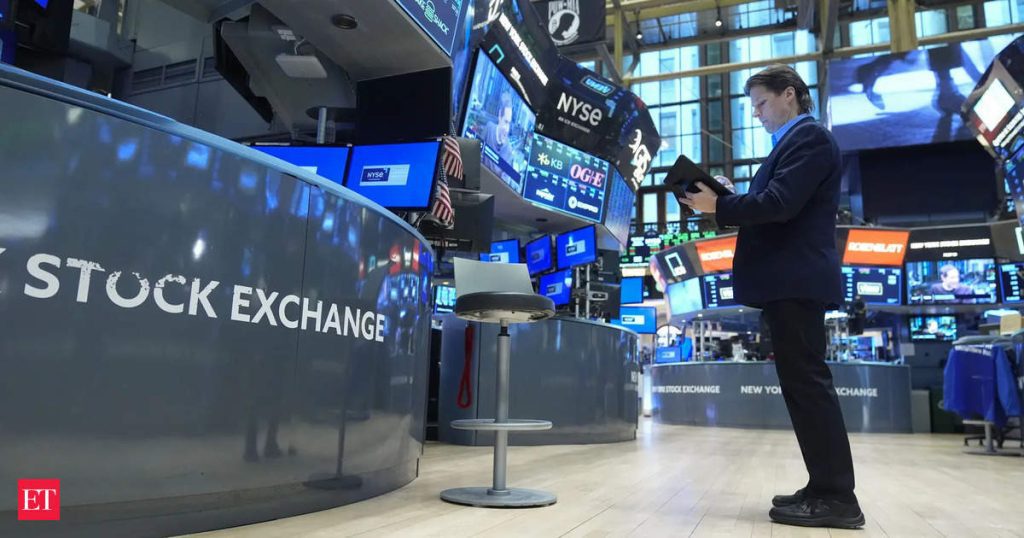The U.S. stock market showed gains on Thursday, supported by the Federal Reserve’s choice to keep interest rates unchanged. The Nasdaq Composite saw an increase of 0.3%, while both the Dow Jones Industrial Average and S&P 500 climbed by 0.2%. This rise follows a rally on Wednesday, driven by Fed Chair Jerome Powell’s positive remarks regarding inflation and recession concerns. Despite previous worries, Powell’s outlook on two potential rate cuts this year boosted investor optimism.
What Contributed to the Stock Market Increase?
The Fed’s decision to maintain interest rates was largely expected, but Powell’s hopeful rhetoric sparked increased market enthusiasm. He pointed out that inflation, partly propelled by tariffs, is likely to be temporary. Additionally, Powell reassured that the risks of recession remain low despite a slowdown in economic growth. This combination of stability and caution positively impacted investor sentiment.
Impact of President Trump’s Tariff Policies on Market Performance
President Trump’s changing tariff strategy continues to shape market dynamics. On social media, he called on the Fed to “CUT RATES” as tariffs start affecting the economy. The potential for additional rate cuts in light of trade pressures adds complexity to market forecasts.
Key Economic Indicators Supporting Market Growth
Several economic reports contributed to heightened investor confidence:
- Unemployment Claims: Last week’s claims were lower than anticipated, indicating a robust labor market.
- Housing Market: Sales of existing homes exceeded analysts’ expectations, reflecting strong consumer demand.
- Manufacturing Growth: Growth in the mid-Atlantic manufacturing sector was better than expected, easing concerns of a broader downturn.
Jerome Powell’s Insights on Economic Uncertainty
Powell recognized the significant uncertainty stemming from trade conflicts and inflation fluctuations. While the Fed increased its inflation forecasts and lowered its economic growth outlook, he emphasized the resilience of the U.S. economy against these challenges, balancing caution with optimism.
Leading Stocks in Market Movements
Among notable stock movements:
- Darden Restaurants: Shares rose by 7.3% after reporting profits that met expectations despite difficulties in the market.
- Five Below: The discount retailer saw a 7.4% increase in stock after reporting higher-than-expected quarterly revenue and profit.
- Accenture: The consulting firm’s stock fell by 6.5%, attributed to concerns over decreased U.S. government contracts, which make up 17% of its North American revenue.
Global Market Reactions to U.S. Economic News
While U.S. markets experienced gains, global reactions were mixed:
- London’s FTSE 100: Declined by 0.1% after the Bank of England held its interest rate steady.
- Germany’s DAX: Dropped by 1.4%, reflecting worries over slowing growth in Europe.
- Hong Kong’s Hang Seng Index: Fell by 2.2%, heavily impacted by selling pressure in tech stocks.
Signals from the Bond Market
The yield on the 10-year U.S. Treasury note decreased to 4.20%, down from 4.25% the day prior. This slight decline suggests that investors are leaning towards safer assets amid ongoing economic uncertainties.
Market Outlook for the Remainder of the Year
Barry Bannister, chief equity strategist at Stifel, expects short-term market rallies but cautions that stock prices may face renewed pressure later in the year. He highlighted the risk of “stagflation,” where economic growth slows while inflation remains high. Bannister noted that while the Fed might lower rates to promote growth, this action could inadvertently drive inflation higher.
FAQs:
Why did the stock market see an increase following the Fed’s decision?
The market surged after Powell reassured investors regarding inflation and hinted at two potential rate cuts in 2024.
How did global markets respond to gains in U.S. stocks?
While U.S. stocks experienced gains, European and Asian markets had varied reactions, with Germany’s DAX and Hong Kong’s Hang Seng experiencing losses.
Disclaimer Statement: This content is authored by a 3rd party. The views expressed here are those of the respective authors/entities and do not represent the views of Economic Times (ET). ET does not guarantee, vouch for, or endorse any of its contents nor is responsible for them in any manner whatsoever. Please take all necessary steps to ascertain that any information and content provided is correct, updated, and verified. ET hereby disclaims any and all warranties, express or implied, relating to the report and any content therein.



